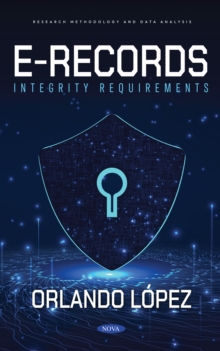
West's Last Report: Is There an Optimal Funding Strategy for STEM Research? PDF
by Bruce J. West
Part of the Research Methodology and Data Analysis series
Description
This book addresses the concern expressed by Pentagon Leaders that government resources would be better spent if we restricted the support of research to the top universities to the exclusion of all others.
Establishing the veracity of this assertion sounds like a straightforward task, but it is not, with the devil being in the details.
In the present case the details reside in the inverse power law (IPL) statistics of the datasets used to construct the measures of research value associated with the three major funding strategies used by the Army Research Office (ARO) to support basic science, technology, engineering, and mathematics (STEM) research.
The statistics of research value in terms of the number of papers published and citations made to those papers are both IPL distributions, which makes the construction and interpretation of viable measures of research quality problematic.
Thus, most of the book is devoted to interpretations of the various measures entailed by IPL statistics, but not with the mathematical details, which are amply referenced.
An in-depth study of the funding by ARO addressing this question was concluded prior to Dr. West's retirement from ARO in July of 2021. The major conclusion drawn from the study was that if the budget of the ARO single individual funding was cut in half and invested instead in block grants to top universities, the result would by a disproportionate loss of research value to ARO and to the U.S.
Army. The book reviews the measures constructed on which this conclusion was reached and the consistency of this conclusion with the discussion of Science of Science carried out by the broader science community.
Information
-
Download - Immediately Available
- Format:PDF
- Publisher:Nova Science Publishers, Inc.
- Publication Date:21/04/2023
- Category:
- ISBN:9798886977349
Information
-
Download - Immediately Available
- Format:PDF
- Publisher:Nova Science Publishers, Inc.
- Publication Date:21/04/2023
- Category:
- ISBN:9798886977349










